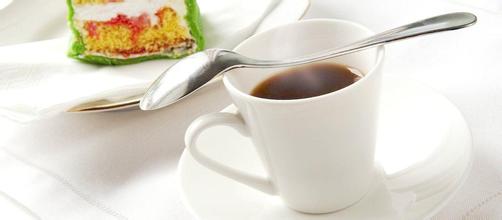Brief introduction of Yemeni Mocha single boutique Coffee Bean planting Market Price

It is difficult for Americans to forget the taste of mocha coffee after drinking mocha coffee at first, but when mocha coffee is decreasing, in order to make people remember the taste of mocha coffee, chocolate or chocolate sauce is added to the coffee to show the milk chocolate flavor of mocha. but in fact, fancy mocha coffee has nothing to do with real mocha coffee.
The common Yemeni mocha coffee shows that there is Mattari,Sananni. In fact, Mattari is the most common name of the Yemeni mocha. At first, it only refers to the coffee from Bani Matar, which has high acidity, but now the coffee beans from many other regions are also mixed with the coffee beans here to get a better price, which also affects the quality stability of Mattari. Sanani is mainly coffee from the west of the Yemeni capital Sana'a. Sanani coffee has soft acidity, good taste uniformity and moderate mellowness.
Mocca Sanani is produced in the surrounding area of Sana'a. Because of its full-sun treatment, the coffee product is not very good. The raw beans are yellowish and slightly green. Since the Ethiopians introduced coffee, Yemeni coffee has been the original coffee of Arabica since it was introduced by Ethiopians. It has been mixed with Arabica coffee. The bean shape is small, the uniformity is poor, and the defect rate is high. It needs to be carefully selected before baking. Since Yemen is a very poor country, the coffee produced there is also organic.
I personally prefer Yemeni coffee in taste. After testing, we choose medium and shallow roasting. The dried aroma after grinding has a hay flavor. Later, fresh fruit aroma will appear, which is very light, but it is completely different from the dry aroma of the previous paragraph. So it's easy to find. When filled, the wet aroma has a hint of peanuts and nuts. The taste is bitter, but it immediately turns to the sweetness of milk chocolate. Some of the consequences of the drop in temperature are more obvious, much like the faint fruit aroma of wine, with cocoa flavor at the back end and moderate mellowness. Although it is tanned coffee, it tastes as clean as washed coffee after drinking.
If you use short words to describe this mocha coffee, I would say that it is an authentic coffee flavor, inheriting the tradition, and there is no lack of freshness and elegance. It is definitely a good coffee that you can't miss as a coffee lover.
Because the steep slopes, valleys and depressions that can be planted in the mountains are very narrow, coffee farmers adopt distributed cultivation and plant a few plants whenever there is a suitable place, regardless of wild forests, cliffs or barren valleys. Experts pointed out that the diversity of the planting environment and the diversity of microclimate have created the ever-changing aroma and acid of Yemeni coffee. Some people laugh that there are no two beans with the same taste in the same sack of Yemeni coffee, which can be called "game" boutique coffee.
This is because Yemeni coffee is scattered among cliffs, vertical valleys, depressions, fields, terraces, plateaus and mountains, and even the same varieties will give birth to different fragrant elves due to different microclimate and soil quality, not to mention the wide variety of Yemeni coffee. Seasoned Yemeni coffee farmers can tell the variety and flavor of coffee from which hills, steep slopes, terraces, villages or areas the coffee comes from. In contrast, the monotonous flavor created by soil and water can not be compared with the single landform planted on a large scale in Brazil on the same plain or hill.
Yemeni dry lack of water, coffee beans are also relatively small, bean color is light green or yellowish. After the farmers harvest the red fruit, they put it on the roof of the farmhouse and expose it to the sun for two to three weeks to let the coffee fruit dry and hard.
During this time, the pulp essence will seep into the beans in the pods to increase the flavor. For about three to six weeks, depending on the dry and hard condition of the fruit, farmers use a traditional grindstone to crush the hard pulp and pods and take out the coffee beans (Yemeni coffee is often damaged or missing, which is caused by the grindstone, in addition to its smaller grains). In addition, Yemeni beans are also harder and brittle than ordinary coffee beans, and the collision in the handling process will also cause bean body breakage or defects, so the work of picking beans before baking can not be omitted, be sure to pick out these broken beans, so as not to deteriorate and affect the flavor.
Although Ethiopia is the birthplace of Arabica, the first coffee that Europeans drank from the end of the 17th century to the beginning of the 18th century came from Yemen. At that time, all African or Arabian coffee was exported from the port of Mocha, and mocha became synonymous with coffee, while Harald, the capital of the city walls, became a supporting role. However, three hundred years later, Yemeni coffee is no longer what it used to be, coffee production is decreasing year by year, and the current annual output is only 12000-8000 tons, which seems to have disappeared from the coffee map. Based on the current global annual coffee production of 7 million tons, Yemen accounts for only about 0.17%, which is no longer important. The Yemeni mocha, which used to dominate the world, has been reduced to a marginal producing country, can it not make coffee fans distressed?
A trip to Yemen is sure to make people wonder: "was this once a coffee country?" As far as I could see, there was almost no one drinking coffee, and the streets were full of refreshing people chewing on Carter grass. The coffee culture that Yemen used to be proud of has changed its tune. A Yemeni folk song eulogizing coffee goes like this: "Yemeni coffee is like gems and wealth on treetops." This lyric is obviously not in line with today's situation.
In the past five years, coffee has been the queen of the ranking of economic crops in Yemen, but Carter grass has been dominant year after year. In the fourth year of ○○, the output of card grass in Yemen reached 11 million tons, but coffee fell to 1. 150000 tons. Yemenis seem to have forgotten the existence of coffee. Yemenis are used to drinking coffee before breakfast and switching to coffee after breakfast or noon. There are far more people drinking this kind of fruit tea than coffee drinkers, and there are far more street vendors selling dried coffee pulp than coffee beans. But looking back at the history of Yemeni coffee, coffee fans do not need to blame too much. After all, Yemenis have a longer history of drinking coffee than drinking coffee. As mentioned in the first chapter of this book, the two influential elders, Shadley, the patron saint of the port of Mocha and Dabani, the godfather of coffee in the port of Aden, drank a cup of coffee to refresh their spirits in the 15th century, and later blessed the soul and took the lead in advocating coffee bean drinks with better brain-awakening effectiveness. from then on, the romantic history of coffee began. Yemenis occupy an indelible position in the history of coffee evolution, but now the coffee culture is declining year by year, and the Yemeni Ministry of Agriculture is also in a hurry to hire foreign experts to find out the crux of the problem and find a solution to avoid the disappearance of well-known Yemeni boutique coffee-Matari, Ithmari, Shaerzi and Sanani.
When it comes to mocha coffee, most people will think of chocolate, the chocolate-rich espresso drinks in Starbucks or Costa, and the Italian mocha coffee pot. It can be said that the word mocha is the most chaotic in the coffee world. Today we are not talking about fancy coffee mocha, nor the mocha coffee maker that makes coffee, but the root of mocha this time, as well as mocha. Coffee goes to the first pass in the world.
In fact, the word mocha comes from the southwestern part of the Asian continent, the southwestern tip of the Arabian Peninsula, a port across the sea from Africa. The port of Mocha now belongs to the Republic of Yemen, one of the poorest countries in the world. Mocha coffee here is regarded as a treasure by coffee lovers all over the world, which can be found but not sought, if they claim to love coffee but have never tasted authentic Yemeni mocha coffee. That's not the biggest regret for coffee lovers.
A long time ago, Ethiopians ruled what is now Yemen and transplanted coffee to Yemen. later, Arabs ruled the entire Arabian Peninsula, and Yemen was also among them. Natural energy coffee also became an Arab drink. In order to monopolize the product of coffee, the export of coffee beans had to be ironed so that they could not sprout. At that time, the port of coffee export was the port of Mocha. As a result, the name mocha coffee has been handed down to this day.
Due to the relatively dry environment in Yemen and the lack of water for coffee treatment, all coffee treatments in Yemen are sun-treated, which maximizes the fruity flavor of the coffee, but also causes a certain miscellaneous flavor. it may also cause instability in quality eventually. The Yemeni mocha coffee has a strong cocoa flavor, a red wine-like fermentation smell, a light fruit aroma, a taste of milk chocolate and a moderate mellowness, but due to the poverty and harsh climate in Yemen, the production of authentic mocha coffee is getting less and less, so the best mocha coffee is expensive.
Important Notice :
前街咖啡 FrontStreet Coffee has moved to new addredd:
FrontStreet Coffee Address: 315,Donghua East Road,GuangZhou
Tel:020 38364473
- Prev

The oldest coffee: a brief introduction to the flavor, taste and aroma characteristics of Yemeni mocha coffee
A long time ago, Ethiopians ruled what is now Yemen and transplanted coffee to Yemen. later, Arabs ruled the entire Arabian Peninsula, and Yemen was also among them. Natural energy coffee also became an Arab drink. In order to monopolize the product of coffee, the export of coffee beans had to be ironed so that they could not sprout. At that time, the port of coffee export was the port of Mocha.
- Next

A brief introduction to the origin, development, history and culture of Zhongyamenka boutique mocha coffee
Yemeni all use sun treatment, beans and flavor look like Ethiopia Harald, sun Yega Xuefei, but the Yemeni flavor seems to be more mysterious and unpredictable. If there is no game, some people dislike it, and some people applaud it. In fact, this is like a good friend, each other still need to maintain a little bit of mystery in order to last forever-Yemeni coffee has this flavor. Play with Yimen beans
Related
- Detailed explanation of Jadeite planting Land in Panamanian Jadeite Manor introduction to the grading system of Jadeite competitive bidding, Red bid, Green bid and Rose Summer
- Story of Coffee planting in Brenka region of Costa Rica Stonehenge Manor anaerobic heavy honey treatment of flavor mouth
- What's on the barrel of Blue Mountain Coffee beans?
- Can American coffee also pull flowers? How to use hot American style to pull out a good-looking pattern?
- Can you make a cold extract with coffee beans? What is the right proportion for cold-extracted coffee formula?
- Indonesian PWN Gold Mandrine Coffee Origin Features Flavor How to Chong? Mandolin coffee is American.
- A brief introduction to the flavor characteristics of Brazilian yellow bourbon coffee beans
- What is the effect of different water quality on the flavor of cold-extracted coffee? What kind of water is best for brewing coffee?
- Why do you think of Rose Summer whenever you mention Panamanian coffee?
- Introduction to the characteristics of authentic blue mountain coffee bean producing areas? What is the CIB Coffee Authority in Jamaica?

